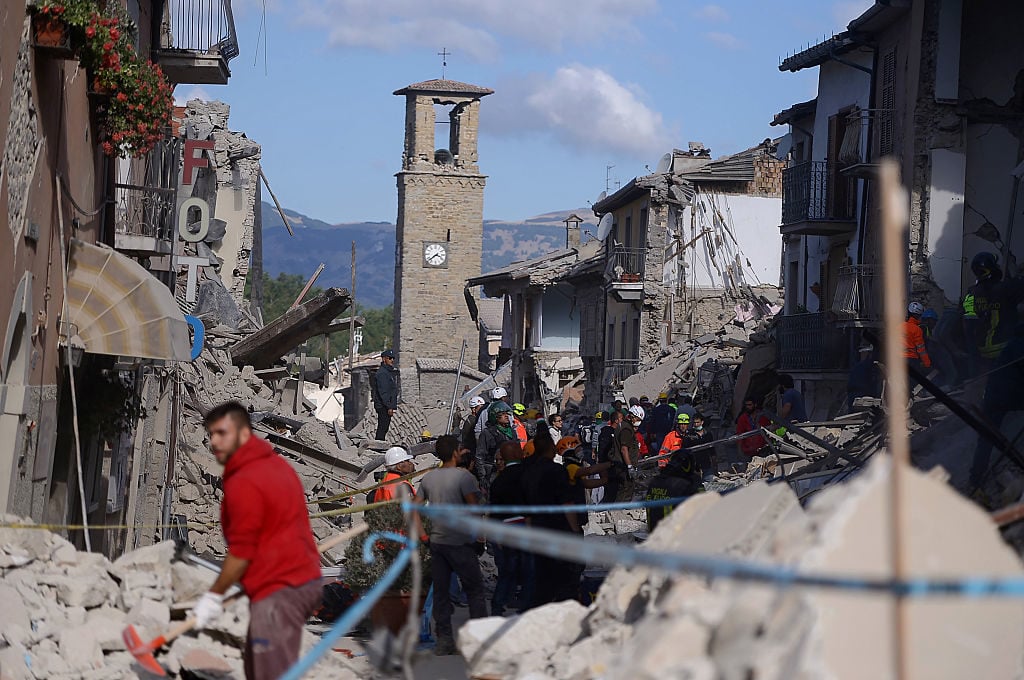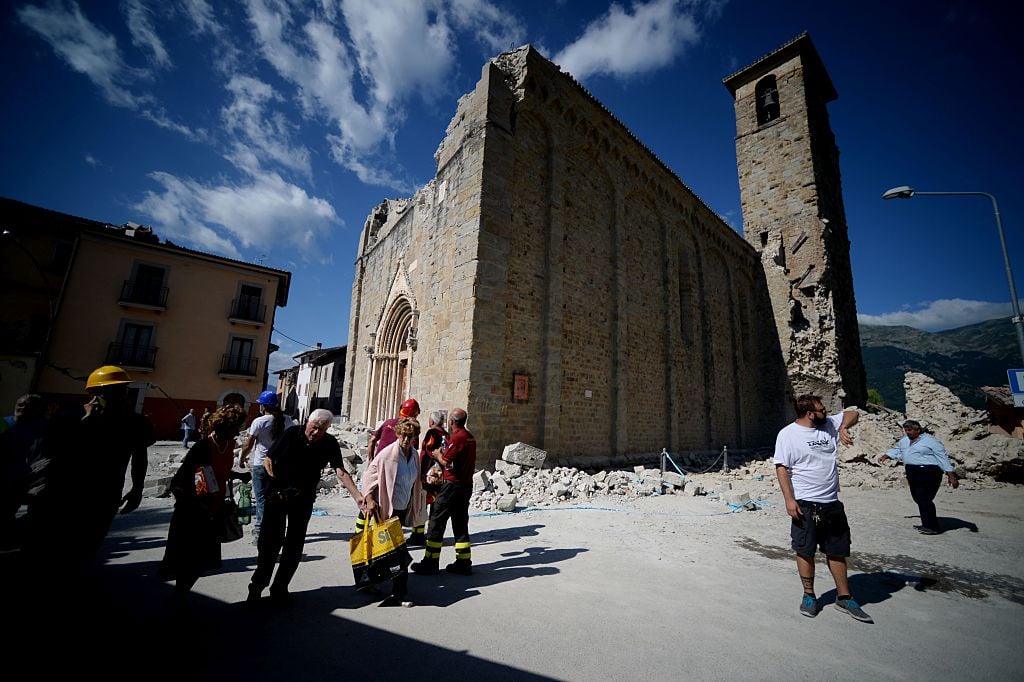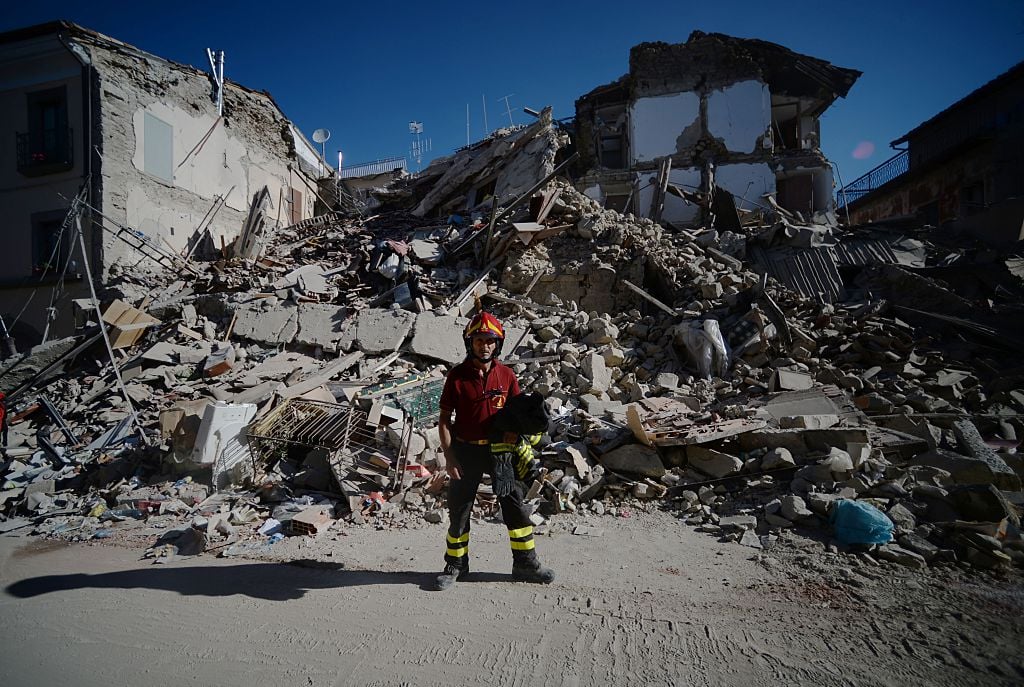Art World
Experts Fear Earthquake Damaged Cultural Heritage in Italy
The beautiful town of Amatrice has taken the brunt of the quake.

The beautiful town of Amatrice has taken the brunt of the quake.

Lorena Muñoz-Alonso

In the early hours of Wednesday, August 24, central Italy was hit by a massive earthquake of 6.2 magnitude that has left at least 247 dead. Hundreds were injured and many are feared to still be trapped under the rubble.
As the devastating scale of human casualties continues to rise, art experts also fear that many historic buildings might have been damaged as a consequence of the quake, which hit a region whose towns and villages are home to precious churches, funeral monuments, and museums, the Guardian reports.

People walk past an earthquake damaged church during search and rescue operations in Amatrice on August 24, 2016 after a powerful earthquake rocked central Italy. Photo Filipo Monteforte/AFP/Getty Images.
Amatrice—the stunning historical town that was largely levelled by the quake—is known for its Cento Chiese (100 churches) filled with art including sculptures, mosaics, and frescoes. According to the BBC, three-quarters of the town have been destroyed, while the mayor of Amatrice, Sergio Pirozzi, told CCN that Amatrice “is no more.”
Half the facade of the 15th century church of Sant’Agostino has collapsed, while the courtyard of one of the town’s Renaissance palaces has been turned into a temporary morgue.
Nearby in Norcia, the birthplace of St Benedict, a 12th century basilica—said to have been built on the foundations of his own house—has suffered “considerable structural damage,” according to the Catholic News Service. A number of 14th-century frescoes in the church of St Augustine as well as the town’s Roman walls—which have survived many earthquakes—are also feared to be damaged, the Guardian reports.

A fireman stands next to ruins in the central destroyed street of Amatrice in central Italy on August 25, 2016. Central Italy was struck by a powerful, 6.2-magnitude earthquake in the early hours of August 24, that shook central Italy and the death toll rose to 247 on August 25, as rescuers desperately searched for survivors in the rubble of devastated mountain villages. Photo Filipo Monteforte/AFP/Getty Images.
In L’Aquila, a town still recovering from the devastating earthquake that took place in 2009, the 13th century church of Santa Maria di Collemaggio—the burial place of Pope Celestine V—is feared to have endured even further damage, particularly to its façade and rose windows. The church was closed for restoration work on the collapsed cupola and arches.
On a more positive note, the Guardian reports that the Basilica of St Francis of Assisi, which houses spectacular frescoes by Giotto and Cimabue and was badly damaged in a quake in 1997, hasn’t been affected this time.

Giotto, Renunciation of Wordly Goods, Basilica of St. Francis of Assisi. Photo Wikimedia Commons.
The magnitude of the quake was so high that cracks were reported in buildings as far Rome—which is over 100 kilometers away from the epicenter—including in the spectacular baths of Caracalla.
“It has been a true drama, there is a lot that has been lost,” the classicist David Rijser told Dutch radio.
Dario Franceschini, the Italian culture ministry, said that while saving lives and helping the homeless population was the priority, a meeting would be held today to assess the scale of cultural damage.
Meanwhile, the clock in Amatrice’s 16th century bell tower remains ominously frozen at 3:36 am, the time when the earthquake began.